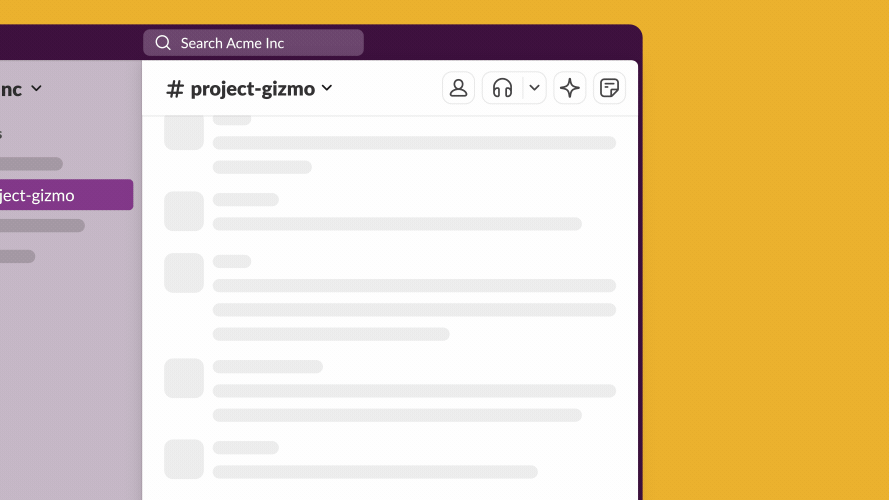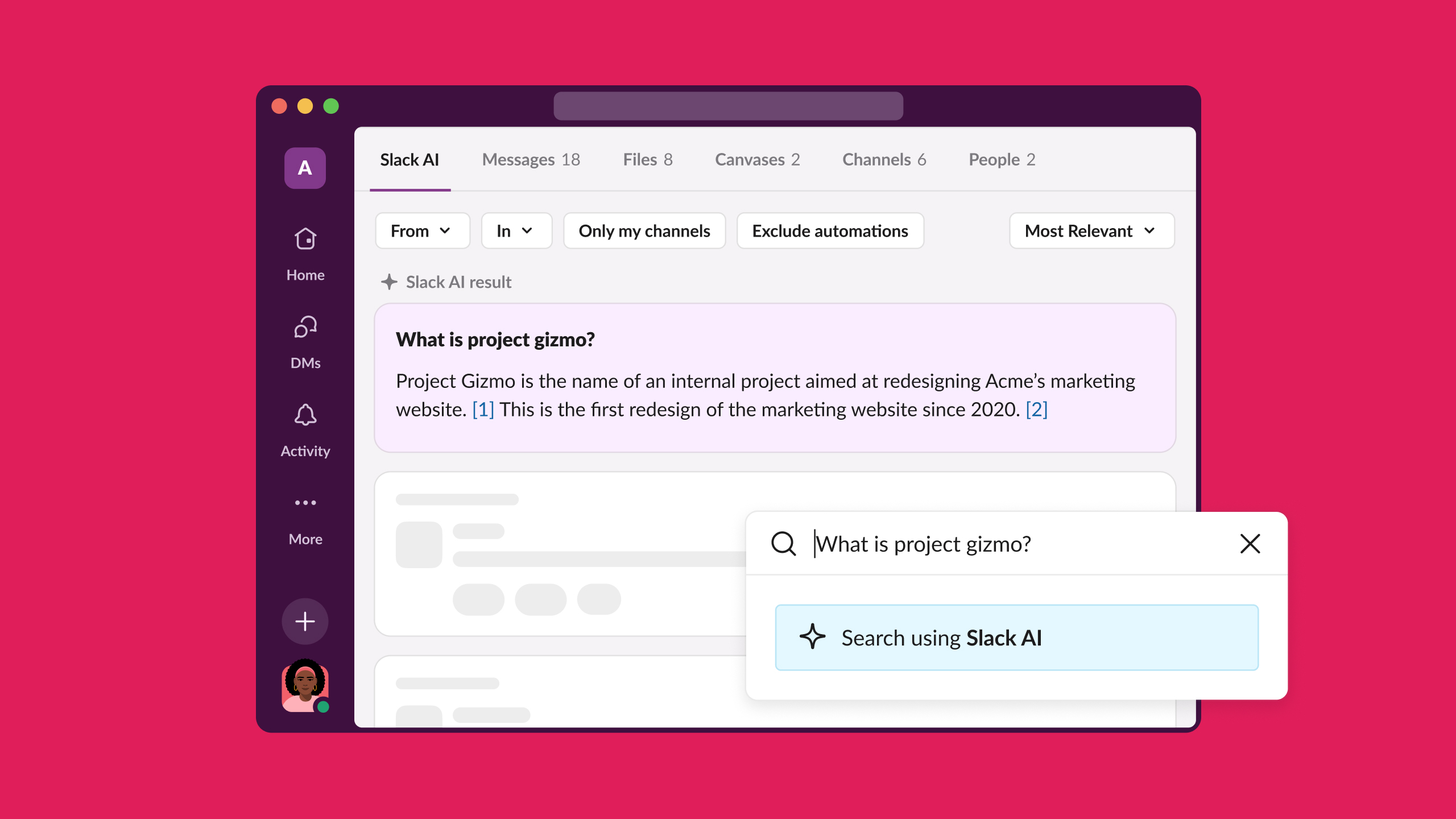As an enterprise communications platform, Slack has become a de facto storage repository for institutional knowledge, but getting at that information has been challenging with conventional search tools. Today Slack introduced a couple of new features designed to make that information more accessible, including a new AI-fueled search tool and the ability to summarize information inside channels.
Noah Weiss, the chief product officer at Slack, says the platform naturally gathers corporate information in an informal and unstructured way. The problem is finding a way to surface that hidden trove of knowledge. “The punchline to all of this is that now this new wave of generative AI capabilities allows us to extract a whole new set of meaning and intelligence out of all that analysis that has been created for years [on our platform],” Weiss told TechCrunch.
Last May Slack announced that it was incorporating generative AI into the platform at the Salesforce World Tour in New York City. It was more of a generalized call to action with the creation of SlackGPT, its own flavor of generative AI designed specifically for content on the Slack platform.
Today’s announcement is about putting that to work in more specific ways. Weiss says being able to summarize channel content helps employees catch up after time off, or simply avoid having to read a long thread to get the gist of the conversation. With channel summaries, you can ask for a summary and Slack’s AI model generates a summary of all the topics discussed along with references to show how the model created each part of the summary, which Weiss says was an essential part of the design of this feature.
“You can drill into any area and we show you all the detailed context. So we were really thinking about transparency, building trust, making sure that we show our work and giving people the ability to drill in to learn more if they want to,” he said.

Image Credits: Slack
The company also allows users to ask questions in a natural way, just as with ChatGPT, but it uses Slack content instead of more generalized internet content, so a user could ask a question like ‘What is Project Gizmo?’ Slack AI then delivers an answer, again with sourcing, to let people see where the answer came from and if they can trust it.

Image Credits: Slack
Each answer includes a quality check, where users can say if the answer was good, bad or neutral, so the model can learn about the quality of the responses, and the system engineers can see how well the model is performing.
He wouldn’t get into specifics about the underlying model, only saying that it was a mix of large language models. “What we found is that they all perform in different ways and with different speed and quality characteristics. We spent a lot of time fine-tuning the models for the data that we actually have in Slack, and also doing a lot on the prompt engineering side.”
Slack AI with search and summarization is an add-on product for enterprise plans, meaning that it will cost additional money over and above the normal license cost. Slack did not provide cost details, but it’s available today in the U.S. and U.K., English only for now, but will be available in additional languages in the near future, according to the company.
